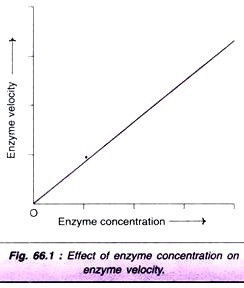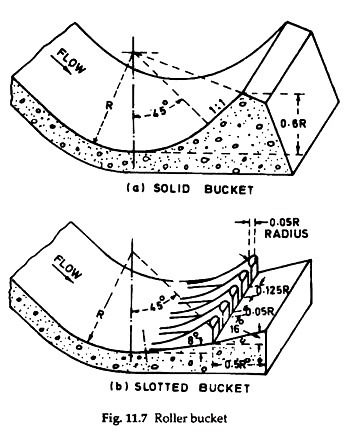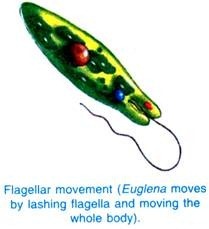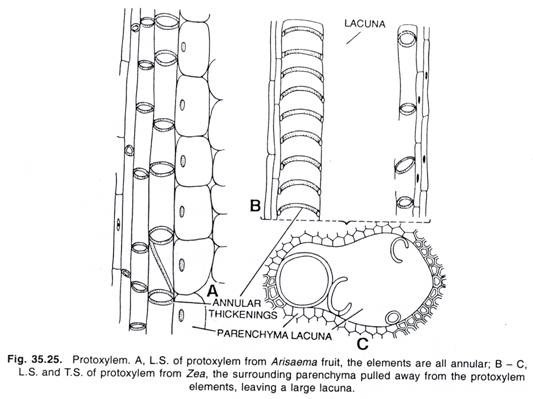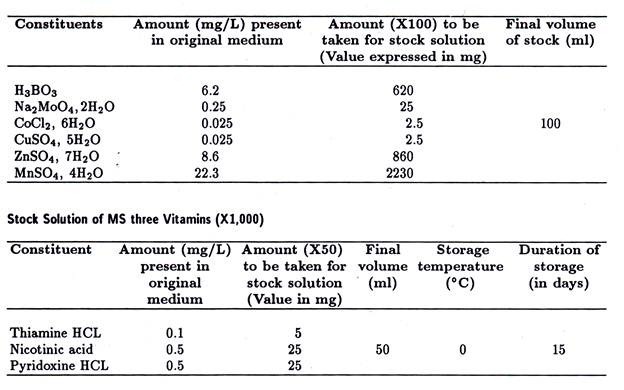The presence of reactive oxygen species can be monitored both directly and indirectly.
Several direct methods are available which include electron spin resonance spectroscopy, chemiluminescence detection, pulse radiolysis, and high-performance liquid chromatography.
Oxygen free radicals once formed in a biological system attack the membrane lipids causing the peroxidation. The products of peroxidation can also be estimated as an indirect method to monitor the presence of free radicals.
1. Electron Spin Resonance (ESR) Spectroscopy for Oxygen-free Radical Detection:
This is the most widely used technique for the direct detection of oxygen free radicals. The method depends on coupling between the electric vector of the magnetic component of electromagnetic radiation and electrical charge in the molecule. The success of this technique, also referred to as electron paramagnetic resonance spectroscopy (EPR), depends on the fact that the paramagnetic resonance is only sensitive to transitions involving unpaired electron, which has a spin of either + 1/2 or – 1/2 and behaves as a small magnet.
It can align itself parallelly or antiparallelly to the magnetic field of the ESR, thus attaining two different energy levels. Upon the application of electromagnetic radiation of correct energy, the absorbed energy is used to move the electron from a lower energy level to an upper energy level, which can be captured as an absorption spectrum. The technique was originally developed to study the paramagnetic transition metal complexes. It was subsequently modified to examine the presence of free radicals. The schematic diagram for a standard ESR spectrometer is shown in Fig. 5.27.
An ESR spectrometer consists of a microwave source, a loop-gap resonator and an amplifier. The sample is inserted in the microwave cavity in the region of high magnetic field. DC magnetic field is gradually increased until resonance occurs, i.e. until the static magnetic field is swept.
This is because most of the ESR spectrometers made to date operate at X-band frequencies at nearly 9000 MHz, with the aid of a monochromatic Klystron source which can be tunable only over a small range. The spectrometer is also equipped with a recording system so that absorption band can be recorded on chart paper. Usually, the first derivative of the absorption band is plotted as ESR spectrum reflecting the rate of change of absorbance as shown in Fig. 5.28 which is subsequently analyzed for the presence of free radicals.
The major factors derived from the ESR spectra consist of the hyperfine coupling constants, line widths and intensities, and g values. As shown in Fig. 5.28, line widths are measured as the distances between points of maximum and minimum slope, intensities are the total extent of each line, and g values are defined as the rate of divergence of the levels.
Higher g values and low field resonance are reflected by rapid divergence, whereas lower g values occur from slow divergence, g value becomes 2.0023 when the total magnetism is derived solely from the electron spin, and can be represented by the following equation:
hv = gmbB (5.104)
Where v is the fixed microwave frequency, mb is Bohr magneton constant, and B is variable magnetic field. Orbital motion induced from the free radicals generates magnetic moment, adding to or subtracting from that of the electron. This shifts this g value to either higher or lower level characterized by a particular free radical (Fig. 5.29)
Free radicals also lead to the electron-nuclear hyperfine coupling. The nuclei having net magnetic moments with nuclear spin [l] of 1/2 should take up to [± 1/2] orientations, whereas those with I of 1 should have three choices (-1, 0 and +1).
Thus, a free radical with a single nucleus of I = 1/2 should contain two components-half having in, of +1/2 and the other half having m, of-1/2, which are reflected in the ESR spectrum producing hyperfine coupling. Similarly, l of 1 should produce three ESR transitions from the three possible orientations, again giving rise to hyperfine coupling (Fig. 5.30).
Although ESR is an extremely sensitive method for the detection of oxygen free radicals up to nanomolar range, it is practically impossible to detect them in their native forms. This is because these free radicals are very short-lived, normally in the region of nanoseconds.
Various techniques are available to prolong the lives of the free radicals; the most practical and widely used technique is by trapping with spin-trapping agents. Spin-trapping agents can make an extremely short-lived radical to live long enough to make the ESR spectroscopic measurement possible. Spin-trapping techniques are widely used in biological systems, and are considered to be the most useful method for the detection of free radicals both in vivo and in vitro systems.
For in vitro trapping of free radicals, a number of trapping agents may be used see Fig. 5.35. Among the trapping agents, the most popular is DMPO. DMPO reacts with superoxide to give the DMPO-OOH adduct. This adduct being very unstable rapidly decomposes into more stable DMPO-OH adduct.
The same adduct is formed if DMPO is allowed to react with OH. (Fig. 5.31). DMPO has been successfully used in the author’s laboratory to detect OH in the biological system. Thus when OH is generated in the presence of a OH. generating system, DMPO forms a spin adduct with the generated OH.
It is important to remember that a spin-trapping agent must be present at the time of the free radical production. Addition of the spin traps after the completion of free radical production may either detect only a fraction of the total amount of free radicals or may not detect them at all. Addition of a spin trap to the free radical makes the radical inactive. Thus a spin trap functions as a free radical scavenger.
Consequently, it often becomes difficult to identify the free radicals from their spin adducts. Generally, the ESR spectra are associated with extra hyperfine coupling characteristics of the trapped species. DMPO may also be used as in vivo spin traps. For the purpose of in vivo trapping of free radicals, DMPO must be injected into the biological systems at the time of free radical production (Fig. 5.32).
Although DMPO can trap an oxygen free radical such as OH. when injected into a tissue, the most popular in vivo nitrone spin trap is a phenyl N-tert-butylnitrone (PBN), which forms a substituted benzyl terf-butylnitroxide spin adduct. In these nitroxides the unpaired electron occurs in the p-orbital on the N2 and O2 atoms. Because spin is absent in the O2 nucleus, the spin will be reflected only for the N2 nucleus.
2. High-Performance Liquid Chromatographic (HPLC) Detection of Oxygen Free Radicals:
Several HPLC techniques have recently been described to estimate the OH both in vitro and in vivo. The methods utilize either DMPO as spin-trap or salicylic acid as a chemical trap with subsequent analysis of DMPO-OH’ adduct or hydroxylated benzoic acid formation using electrochemical detection technique.
Although both methods have been used in biological systems, the later has been proven to be more successful. The success of the salicylic acid method depends on the formation of two stable compounds, 2,3-and 2,5-dihydrobenzoic acid, upon the interaction of OH and salicylate. The reaction products also consist of minor amounts of another product, catechol (Fig. 5.33). These hydroxylated products of benzoic acid are very stable and can produce electrical signals when analyzed by HPLC using an electrochemical detector.
Electrochemical detection differs from other methods of detection because it changes the sample. The detection can be performed either amperometrically or coulometrically, the former being the most widely used technique. After the sample is separated on the column, it passes by an electrode (known as the working electrode) in the analytical cell.
The working electrode remains at a certain potential with respect to the potential of the electrolyte (as measured by the reference electrode). The electrochemical detector applies a voltage to the working electrode, thus adding energy to the system.
The following equation expresses the energy relationship in an electrochemical system:
Voltage = Total energy/Charge
Hence
Total energy = Charge x Voltage
Where voltage is expressed in electron volts (eV) and the charge is Faraday’s constant (96,500 coulombs/mol electrons).
The current produced is proportional to the amount of analyte injected on the column. This equation describes the relationship between the current and the amount injected:
I = nKFD2/3C (5.105)
Where I is the current produced by the electrolysis reaction; n is the number of electrons involved in the reaction; F is Faraday’s constant; K is cell constant; D is the diffusion coefficient of the analyte; and, C is the amount of analyte injected onto the column.
An electrochemical reaction occurs in three stages:
1. Mass transport (diffusion):
The compound diffuses from the solution in the cell to the electrode surface.
2. Electrolysis:
At the electrode surface, electrons are either removed from the compound (oxidation) or supplied to it (reduction).
3. Re-diffusion:
The electrolyzed compound passes back into solution. In principle, an electrochemical detector functions by connecting the working electrode to the electronics. The detector maintains the potential difference between the working and reference electrodes. As the sample flows through the cell, the potential at the working electrode electrolyzes the component(s) of interest, thus producing a current from the electron transfer. The auxiliary electrode remains at ground.
The current flowing through the working electrode is converted to a voltage value. When the sample oxidizes, a positive response results; a reduction reaction produces a negative response. The relationship between current and applied potential is called a current-voltage curve, or hydrodynamic voltammogram. From the recorded voltage the concentration of the free radicals is calculated.
Both DMPO and salicylate methods have been successfully used in the author’s laboratory to detect the formation of OH’ in a biological tissue such as heart. Using isolated perfused heart preparation, either DMPO (4.5-5.0 mmol/l) or salicylic acid (91mmol/l) was infused directly via a side arm of aortic cannula into the heart with an infusion rate of 1 ml/min.
The perfusate was sampled, the effluent filtered through a 0.22-mm pore-size Nylon-66 sample filter (Rainin, Woburn, MA) and 20 ml were injected onto a Waters (Milford, MA) HPLC equipped with a model U6K injector, model 510 pump, model 460 electrochemical detector, and a model 740 Data Module. The detector potential was kept at + 0.6 V, employing a glassy carbon working electrode against an Ag / AgCl reference electrode.
An Altex Ultrasphere (3 mm ODS, 75 x 4.6 mm) column (Rainin, Wobum, MA) with a Brownlee RP-18 precolumn (Rainin) was used for the detection of the DMPO-OH’ adduct at a flow rate of 1 ml/min. The mobile phase consisted of 0.03 mol/l of citric acid monohydrate, 0.05 mol/l of anhydrous sodium acetate, 0.05 mol/l sodium hydroxide, and 8.5% of acetonitrite adjusted to pH 5.1 with glacial acetic acid and was filtered through a 0.22-mm pore- size Nylon-66 solvent filter (Rainin). The DMPO- OH’ adduct peak was identified by injecting the DMPO adducts produced from a pure OH’ generating system.
To detect the product of salicylic acid-OH- interactions, again the perfusate was filtered through a Rainin 0.22-mm pore-size Nylon-66 sample filter. A 25-ml volume of the sample was injected onto an Altex Ultrasphere (3 mm ODS, 75 x 4.6 mm) column (Rainin) protected by a Brownlee RP-18 precolumn (Rainin).
The hydroxylated products of salicylic acid after interaction with hydroxyl radicals, 2,3-dihydroxybenzoic acid (23-DHBA) and 2,5-dihydroxybenzoic acid (2,5-DHB A), were eluted with a buffer containing 0.03 mol/1 of sodium acetate and 0.03 mol/1 of citric acid (pH 3.6) at a flow rate of 1 ml.min. the detection potential was maintained at +0.6 V, employing a glassy carbon working electrode and an Ag/AgCl reference electrode.
Retention times of the peaks of 2,5-DHBA and 2,3-DHBA were verified by injecting authentic standards (Aldrich, Milwaukee, WI) and by injecting the hydroxylated products of salicylic acid from a pure OH’ generating system (Fig. 5.34). Examples of a few selected spin traps are shown in Fig. 5.35.
3. Chemiluminescence Measurement for Oxygen Free Radical Detection:
Any free radical species including oxygen free radicals are capable of emitting low-level chemiluminescence. In order to produce luminescence, the energy released from the free radical reactions (viz., oxidation reactions) must be sufficient to produce light. This emitted light can be measured with the help of a luminometer. The reaction rate depends on the concentration of the reacting molecules, thus, chemiluminescence intensity can be recorded as a measure of the concentration of free radicals.
To measure the luminescence in a biological system, the tissue extract or the fluid is mixed with a synthetic compound such as luminol which luminesces during the oxidation by a free radical reaction as shown below:
Luminol + Oxygen free radical —> α-aminopthalic acid + N2 + Light (5.106)
As mentioned above, chemiluminescence is measured with the help of a luminometer which consists of an amplifier to convert and amplify the output from the photomultiplier and drive the output device. The output device usually consists of a frequency counter and/or a chart recorder or oscilloscope. The instrument is also equipped with a shutter which allows a continuous operation of the photomultiplier in order to remain dark adapted. The sample is placed inside a chamber which is kept dark all the time.
A luminol stock solution is made by dissolving 1.77 mg of luminol (5-amino-2, 3-dihydrophthalazine 1,4-dione) in 1 ml of demethylsulfoxide (DMSO) to give a concentration of 10-2 m. It is diluted before over 10. Although this method is capable of estimating the oxygen free radicals, it cannot distinguish between the individual types, namely, between O2–, OH’, 1O2, or H2O2. The method is still useful for initial screening purposes, and is widely used in free radical detection.
4. Pulse Radiolysis Method:
Pulse radiation is usually generated by linear electron accelerators (Linacs) or by Van de Graaff accelerators, each having certain advantages. The energy carriers are usually accelerated electrons with energies in the MeV range. In aqueous solution, the energy is used for ionization (H2O –> H2O+ + e–) and excitation (H2O H2O*).
These reaction products are converted within 10-12 s into hydrated electrons, hydrogen atoms and hydroxyl radicals:
The equipment for the pulse radiolysis comprises a pulsed accelerator, physical dosimeter, irradiation cell, sample storage and flow system, and detection and signal recording system. Irradiations are performed with pulsed electron beams from a linear or Van de Graaff accelerator as well as with small cyclotrons. Intensity of the electron beam is regulated through a physical dosimeter.
The irradiated volume is usually small and irradiation cell is controlled by a flow system with a large sample of unirradiated solution. The resulting signal is monitored by optical or conductivity measurements. For optical measurements, the irradiation cell is penetrated by a beam of intense light rectangularly to the electron beam. Light focusing through the irradiation cell and into a monochromator is achieved by an appropriate lense system.
After passing through the monochromator, the light beam is converted into an electrical signal by a photodetector, and finally after amplification the time-resolved signal is displayed on an oscilloscope. For conductivity detection, an electron beam penetrates the area between two electrodes to which a voltage of typically 20-100 V is applied.
Any generation or destruction of charged species in the irradiated solution leads to a change in conductance and is recorded as an electrical signal. The major disadvantage of using the pulse radiolysis method is that it is an extremely sophisticated and expensive experimental technique. The instrument is available in only a few selected places. The instrument can be run only with the help of an experienced pulse radiolysist or a physicist.
5. Biochemical Methods for Oxygen Free Radical Detection:
Several biochemical assays are also available to determine oxygen free radicals in bio-samples. The two most commonly used methods are the deoxyribose oxidation method to determine OH’ and the cytochrome c oxidation method to estimate O2.
1. Deoxyribose oxidation as a measure for OH–:
The success of the method depends on the fact that deoxyribose reacts with OH. with a rate constant of 3.1 x 109 M-1s-1 producing malonaldehyde. As described previously malonaldehyde can react with thiobarbituric acid to produce a red color which can be measured at 535 nm. The actual assay system consists of (in a total volume of a 1-ml biosample): 28 mM deoxyribose, 20 mM Tris-HCL buffer, pH 7.4,100 mM FeCl3, 100 mM EDTA, 1 mM H2O2 and 100 mM ascorbate. The reaction mixture is incubated at 37°C for 1 h, after which malonaldehyde formation from deoxyribose oxidation is measured using thiobarbituric acid reaction described under malonaldehyde assay.
2. Cytochrome reduction as a measure for O2:
The method depends on the ability of superoxide anion to reduce cytochrome c. To determine the amount of cytochrome c reduced by O2– the biosample is incubated with 0.75 mM horse- heart ferricytochrome c (type III, Sigma, St Louis, MO). The absorbance is measured at 550 nm using a spectrophotometer. The amount of cytochrome c in the reaction mixture is calculated using an absorbance coefficient of 21.1 mM-1 cm-1 at 550 nm.
6. Indirect Methods of Oxygen Free Radical Detection:
Several methods are available to detect the presence of oxygen-derived free radicals in the biological systems. The success of the method depends on the interaction between the free radicals and the membrane lipids. Polyunsaturated fatty acids (PUFA) of the membrane phospholipids are extremely susceptible to free radical attack. The reactions generate lipid hydroperoxides and endoperoxides, as well as malonaldehyde.
In addition, during the lipid peroxidation after the abstraction of the H atom, carbon molecules rearrange between themselves producing conjugated dienes. Both malonaldehyde and diene formations are considered as powerful tools to measure the extent of lipid peroxidation in bio-systems.
1. Assay for malonaldehyde formation:
The most commonly used method to estimate malonaldehyde formation is the spectrophotometric assay of the malonaldehyde formation following its reaction with thiobarbituric acid (Fig. 5.36). The sample (tissue homogenate or fluid) (91 ml) is mixed with 0.2 ml of 15% trichloroacetic acid and 1 ml of 0.75% thiobarbituric acid in 0.5% sodium acetate, and the mixture is boiled for 15 minute. The red colour of the thiobarbituric acid-malonaldehyde complex is read with a spectrophotometer using a 535-nm wavelength.
Although this method is rapid and relatively simple, the significance of the results is often blunted because of the incorrect interpretation of the results. The thiobarbituric acid-reactive products (often referred to as TBAR) as a measure for malonaldehyde formation is nonspecific, because thiobarbituric acid not only forms a colored complex with malonaldehyde, but it also reacts with many other compounds including ribose, bilirubin, amino acids, pyrimidines, and sialic acid.
Several HPLC methods have been developed to overcome this problem. One such technique depends on measuring malonaldehyde and other lipid metabolic products after derivatizing with 2.4-dinitrophenylhydrazine (DNPH). For derivatization purpose, 310 mg of DNPH is dissolved in 100 ml of 2 M HC1.
One-tenth of a milliliter of this DNPH reagent is added to the sample (1.5 ml) in a 20-ml screw-capped Teflon-lined test tube. An aliquot of 0.5 ml is added to the tube, the contents are mixed for 15 min by vortexing, and then 10 ml of pentane are added to the mixture. The tubes are intermittently shaken for 30 min, and reactions are allowed to occur at room temperature.
The organic phase is removed, and the aqueous phase is extracted with an additional 20 ml of pentane. The pentane extracts are combined evaporated under a stream N2 at 30°C, and reconstituted in 200 ml of acetonitrile. In the authors’ laboratory, a 25-ml volume of the filtered (0.2-mM Nylon-66 membrane filters in Microfilterfuge tubes from Rainin Instrument Co., Woburm, MA) sample was injected onto a Beckman Ultrasphere ODS C18 (3-mm particle size; 7.5 cm x 4.6 mm I.D.) column (Rainin Instrument Co., Wobum, MA) in a Waters chromatograph (Milford, MA) equipped with a model 820 full-control Maxima computer system, satellite Wisp model 700 injector, model 490 programmable multiwavelength UV detector (four channels), two model 510 pumps, and a Bondapak C18 Guard-Pak piecolumn.
The DNPH derivatives are detected at 307, 325, and 356 nm simultaneously with three channels of the M- 490 detector at a flow rate of 1 ml/min with an isocratic gradient of acetonitrile-water-acetic acid (40 : 60 : 0.1 v/v/v) for a total run time of 24 min. The column is washed with acetonitrile- acetic acid (100: 0.1 v/v) before each day’s work to remove any bound reagent.
DNPH derivatives of formaldehyde (FDA), acetaldehyde (ADA), acetone, and malonaldehyde (MDA) are separated using three different wavelengths: 307, 325, and 356 nm. MDA gives absorption maxima at 307 nm whereas the absorption maxima for FDA, ADA, acetone is 356 nm. The retention times of MDA, FDA, ADA, and acetone are 5.3, 6.6, 10.3, and 16.5 min. respectively, making a total run time of 24 min.
In order to confirm the identity of lipid metabolites, GC-MS analyses may be performed. The GCMS system used in the authors’ laboratory consisted of a Hewlett-Packard model 5890 gas chromatograph (Fullerton. C A) with al5mx0.32 mm I.D. capillary column 0.25-µm film thickness (Supelco SPB-5, Bellefonte, PA), which was connected directly to the mass spectrometer via a heated transfer line. The transfer line temperature was maintained at 250°C.
The carrier gas was helium at an average linear the velocity of 65.8 cm/s, and the injection temperature was 230°C. The injector was operated in the split-less mode. A temperature program was used which consisted of a starting temperature of 75°C which was as increased to 175 °C at increments of 25°C/min. Between 175°C and 200°C, the temperature was increased at a rate of 5°C/min and finally to 300°C at increments of 25°C/min.
The mass spectrometer was a Finnigan-MAT model 50B quadrupole instrument (Palo Alto, CA) in combination with an INCOS data system. The instrument was set on electron ionization mode. The ion source temperature was 180°C, and the ionization energy was 70 eV.
The system was coupled to a Data General model DG 10 computer (Southboro, MA) and a Printronix model MVP printer (Irvine, CA). For GC-MS analysis, the hydrazine derivatives of MDA, FDA, ADA, acetone, and PDA were dissolved in chloroform (50ng/ml). Similarly, hydrazine- derivatized heart perfusate samples were reconstituted in chloroform. Samples (2 ml) of standard and extracts were injected onto the GCMS system. Following the full-spectrum identification of each of the hydrazones, a selective ion monitoring (SIM) program was developed, and additional spectra were obtained in the SIM mode.
The identity of the peaks may be confirmed by comparing the retention times with those of authentic standards using GC-MS. The HPLC-GC-MS data for the five lipid metabolites are presented in Figs. 5.37, 5.38 and 5.39. The molecular ions (M+) of the synthetic hydrazones of FDA, MDA, ADA, acetone, and PDA are 210, 234, 224, 238, and 238, respectively.
2. Assay for conjugated diene formation:
Lipid peroxidation can proceed by hydrogen abstraction or by an addition reaction. The carbon-centered radical formed is then stabilized by spontaneous molecular rearrangement to form conjugated diene (Fig. 5.40). The diene formation can be detected spectrophotometrically.
The biosamples are extracted with a methanol-chloroform mixture (1:2, v/v). The mixture is allowed to stand at room temperature for 10 min, and then centrifuged at 260 x G for 10 min. The supernatant fluid is decanted into another centrifuge tube, the volume adjusted to 30 ml with methanol-chloroform (1:2, v/v), and then 10 ml of water are added.
The contents are mixed gently, centrifuged, and the chloroform layer is transferred to a clean tube. The chloroform is evaporated to dryness under N2, and the residue is dissolved in spectroscopic grade cyclohexane. The solution is scanned between 220 and 300 nm against a cyclohexane blank.

